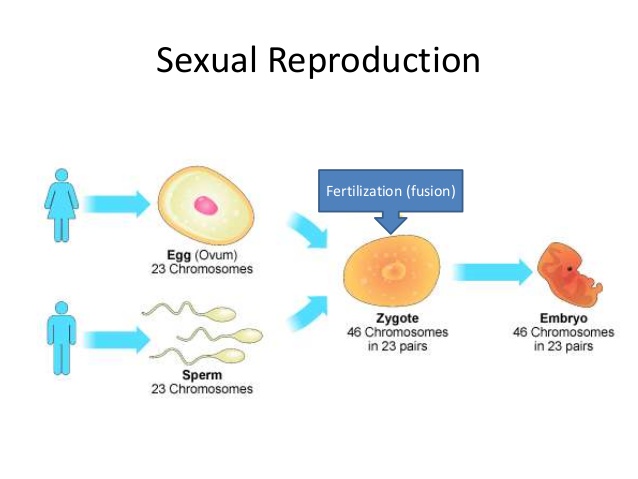What is Reproduction ?
Reproduction is a biological process that results in the formation of new individuals of the same kind, though usually with slightly genetic, structural and physiological variations.
Types of Reproductions
Reproductions can be categorized into two types:
1. Asexual Reproduction
2. Sexual Reproduction
1. Asexual Reproduction
Asexual Reproduction is a process of creating new individual using one parent organism. The unit of reproduction is commonly formed from the somatic cells of the parent. Meiosis does not occur in asexual reproduction.
In asexual reproduction, a single organism is capable of producing its own kind and the individuals produced are genetically identical. It is mostly an characteristics feature of lower organisms such as protozoans, sponges, coelenterates etc.
Types of Asexual Reproduction
There are many types of asexual reproduction. Four major types are followings:
Binary fission
The body of an individual divides into two equal halves. Usually occurs in bacteria.
Budding
Budding, (torulation) an outgrowth or bud develops, grows, constricts at the base and separates from the parent body. e.g. yeast and Hydra. The complex budded condition is called torula stage.
Fragmentation
Fragmentation occurs by breaking of the parent organism into two or more parts, each of which grows to form an independent individual, e.g. algae like Spirogyra and bryophytes such as Marchantia, Riccia, etc.
There is a noticeable difference in the size of the individuals in fragmentation process.
Parthenogenesis
Parthenogenesis is the reproduction of normally sexual organisms where an egg develops into a complete individual without being fertilized.
2. Sexual reproduction
In sexual reproduction, two parents of opposite sex participate along with fusion of male and female gametes. In males, the gametes are sperm in males and the gametes are eggs in females.
When male and female parents gamete combine during fertilization, the result is a zygote, which continues to develop into an embryo later.

All organisms have to reach a certain stage of growth and maturity in their life cycle before they reproduce sexually.
Life cycle of an organism is divided into the following three phases:
(i) Juvenile or vegetative phase — Pre-reproductive period
(ii) Reproductive phase — Reproductive period
(iii) Senescent phase — End of reproductive period leading to ageing.
Reproduction is a seasonal phenomenon in some organisms.
